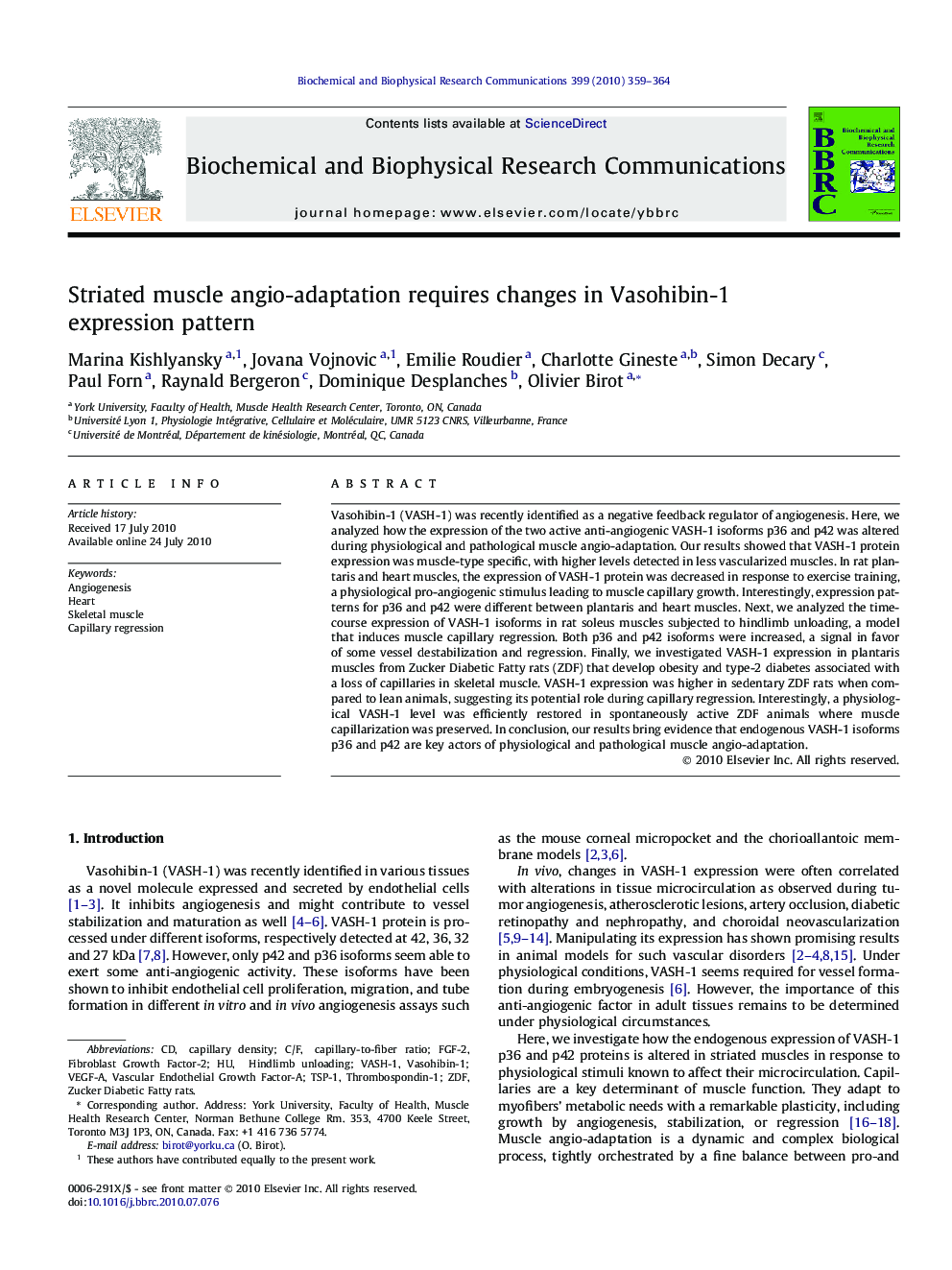| Article ID | Journal | Published Year | Pages | File Type |
|---|---|---|---|---|
| 1931605 | Biochemical and Biophysical Research Communications | 2010 | 6 Pages |
Vasohibin-1 (VASH-1) was recently identified as a negative feedback regulator of angiogenesis. Here, we analyzed how the expression of the two active anti-angiogenic VASH-1 isoforms p36 and p42 was altered during physiological and pathological muscle angio-adaptation. Our results showed that VASH-1 protein expression was muscle-type specific, with higher levels detected in less vascularized muscles. In rat plantaris and heart muscles, the expression of VASH-1 protein was decreased in response to exercise training, a physiological pro-angiogenic stimulus leading to muscle capillary growth. Interestingly, expression patterns for p36 and p42 were different between plantaris and heart muscles. Next, we analyzed the time-course expression of VASH-1 isoforms in rat soleus muscles subjected to hindlimb unloading, a model that induces muscle capillary regression. Both p36 and p42 isoforms were increased, a signal in favor of some vessel destabilization and regression. Finally, we investigated VASH-1 expression in plantaris muscles from Zucker Diabetic Fatty rats (ZDF) that develop obesity and type-2 diabetes associated with a loss of capillaries in skeletal muscle. VASH-1 expression was higher in sedentary ZDF rats when compared to lean animals, suggesting its potential role during capillary regression. Interestingly, a physiological VASH-1 level was efficiently restored in spontaneously active ZDF animals where muscle capillarization was preserved. In conclusion, our results bring evidence that endogenous VASH-1 isoforms p36 and p42 are key actors of physiological and pathological muscle angio-adaptation.
Research highlights► Vasohibin-1 is a key actor of angio-adaptation in skeletal and cardiac muscles. ► Expression of the anti-angiogenic Vasohibin-1 is muscle-type specific. ► Vasohibin-1 isoforms p36 and p42 have different expression patterns in muscle tissue. ► Physical activity restores physiological Vasohibin-1 levels in diabetic rat muscles.
